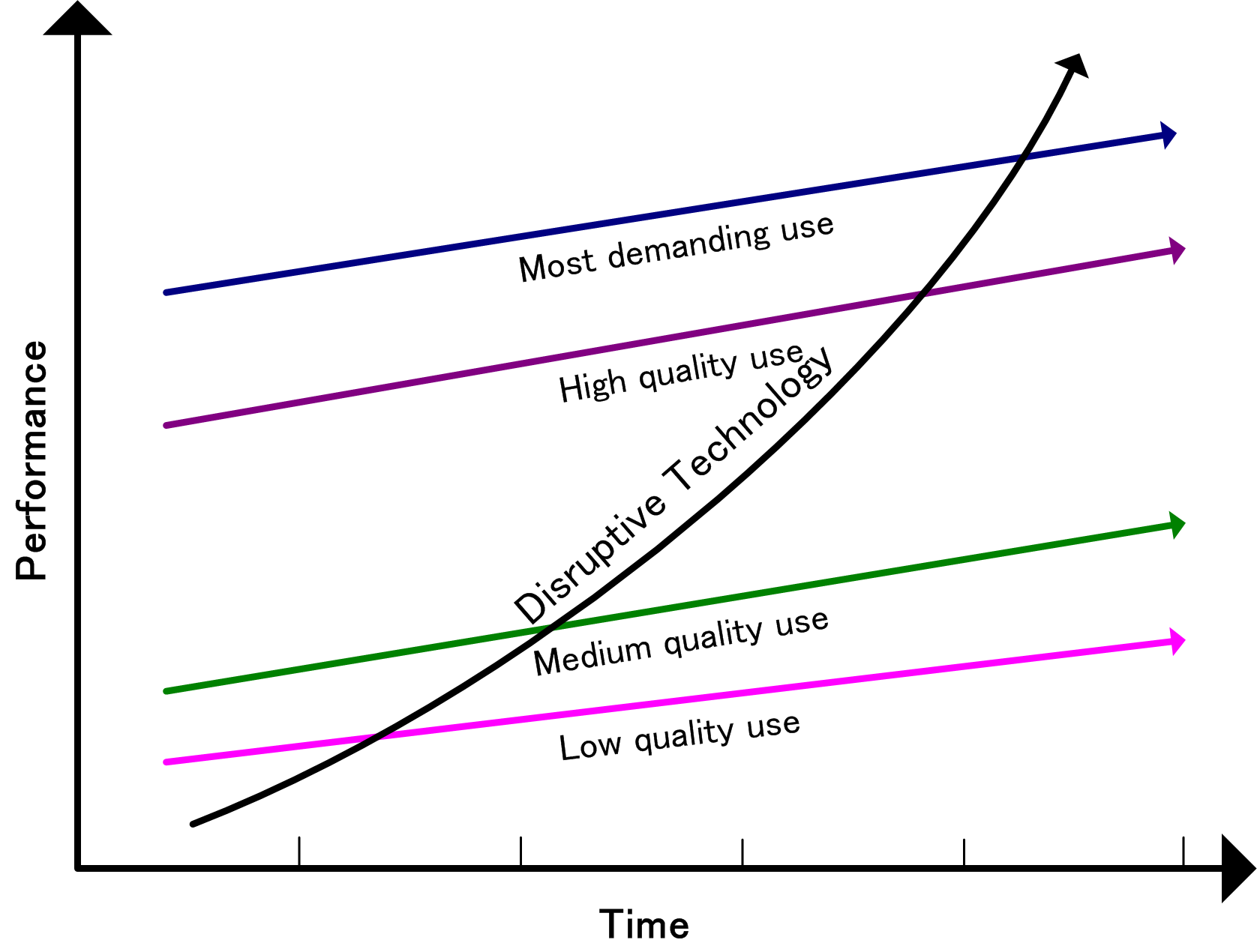In an article last month in the Sunday Times, Robert Lea discussed “How society learns to love ‘disruptive technologies’.” “When Amazon emerged to turn retailing on its head, when Uber landed to spell the end of cab-hailing as we know it, no one described them as “disruptive technologies”. Now everyone, apparently, is a disrupter or being disrupted. But is it, initially, obvious what a disruptive technology is?” Well that depends a bit on how well you understand the new meaning of the word disruptive, doesn’t it?
Oxford Dictionaries gives the adjective two meanings: “Causing or tending to cause disruption; innovative or groundbreaking.” That second and younger definition doesn’t really give the word its full due, since it means so much more than just new or even original in its modern incarnation. And another thing to note is that while wearing its 21st-century meaning, disruptive is more often than not paired with either “technology” or “innovation” itself. Wikipedia fleshes it out with the following explanation: “A disruptive innovation is an innovation that creates a new market and value network and eventually disrupts an existing market and value network, displacing established market leaders and alliances. The term was defined and phenomenon analyzed by Clayton M. Christensen beginning in 1995.” Is that a bit confusing? Forbes might be able to help. Not long ago, in 2013, it ran an article with the headline: “Disruption Vs. Innovation: What’s the Difference?”
“People are sometimes confused about the difference between innovation and disruption. It’s not exactly black and white, but there are real distinctions, and it’s not just splitting hairs. … Innovation and disruption are similar in that they are both makers and builders. Disruption takes a left turn by literally uprooting and changing how we think, behave, do business, learn and go about our day-to-day. Harvard Business School professor and disruption guru Clayton Christensen says that a disruption displaces an existing market, industry, or technology and produces something new and more efficient and worthwhile. It is at once destructive and creative.”
Harvard Business Review, in whose pages the theory of disruptive innovation was first introduced in 1995, warned last year that “too many people who speak of “disruption” have not read a serious book or article on the subject. Too frequently, they use the term loosely to invoke the concept of innovation in support of whatever it is they wish to do. Many researchers, writers, and consultants use “disruptive innovation” to describe any situation in which an industry is shaken up and previously successful incumbents stumble. But that’s much too broad a usage.” As Clayton M. Christensen (who first coined the term), Michael E. Raynor and Rory McDonald argue, “The problem with conflating a disruptive innovation with any breakthrough that changes an industry’s competitive patterns is that different types of innovation require different strategic approaches. To put it another way, the lessons we’ve learned about succeeding as a disruptive innovator (or defending against a disruptive challenger) will not apply to every company in a shifting market. If we get sloppy with our labels or fail to integrate insights from subsequent research and experience into the original theory, then managers may end up using the wrong tools for their context, reducing their chances of success. Over time, the theory’s usefulness will be undermined.”
I’m pretty sure this post doesn’t qualify as a serious article, as prescribed by the authors above. So my advice to any prospective disruptors out there is to go out and buy yourself a book. “The Innovator’s Dilemma: The Revolutionary Book That Will Change the Way You Do Business,” by Clayton M. Christensen himself, might be a good place to start.
*****

